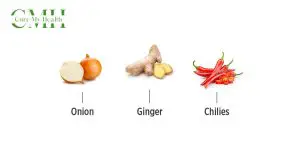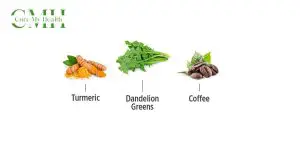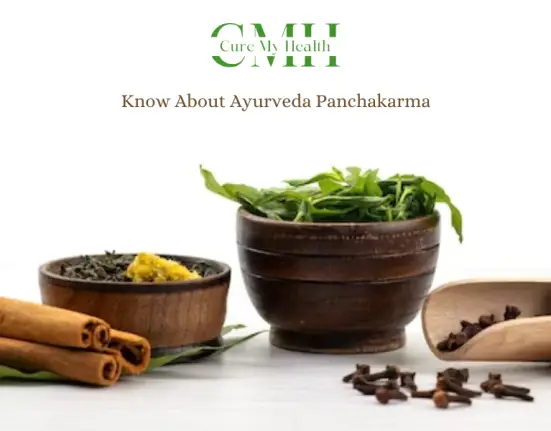Introduction
Ayurveda is an ancient Indian system of medicine that emphasizes the importance of a balanced diet and lifestyle for optimal health. In Ayurveda, there are six essential tastes that are important to include in one’s diet. These tastes are known as “Rasas” and each has a unique effect on the body and mind.
These varied meanings only indicate the significance of taste in the Ayurvedic tradition. Race is in a very real way the essence of life and literally affects every aspect of our being – from our structure and physiology to our overall state of mind and consciousness.
Ayurveda sees rasa, or taste, as an immensely powerful therapeutic tool that determines not only how we experience our food, but ultimately the overall flavor of our existence.
Taste is given a much deeper meaning in Ayurveda than we are used to in the West; it is considered critically important in determining the effect that various foods, spices, therapeutic herbs and experiences will have on our state of balance – body, mind and spirit.
Ayurveda recognizes six tastes, each of which plays a vital role in our physiology, health and well-being. Sweet, sour, salty, pungent, bitter and astringent tastes combine in countless ways to create the incredible variety of tastes we encounter throughout our lives.
Even the same substance can taste different depending on where it is grown or raised, when it is harvested, whether it is stored or preserved, whether and how it is cooked or processed, and how fresh or how old it is.

So taste can tell us a lot about not only what we eat, but also the physical and energetic qualities we receive as a result.
In many ways, taste is a living representation of experience: that of the substances we ingest and our own as we taste them. Ayurveda teaches us to fully acknowledge, appreciate—even enjoy—the variety of flavors we encounter every day. Only then can we truly harness the potential of taste to effect positive changes in our mind and body.
The tendency to experience taste also helps us better understand the six tastes, cultivate a deeper relationship with each, and begin to adapt our habits to what we learn.
Types of tastes in Ayurveda
The six basic tastes in Ayurveda are:
Sweet (Madhura):
The sweet taste is known to nourish and ground the body and mind. It is believed to provide strength, increase longevity and promote healthy body tissues. Foods that are naturally sweet, such as fruits, grains, and dairy products, are considered beneficial in Ayurveda.
Also known as Sweet Taste in Ayurveda, Madhura Ayurveda plays a vital role in promoting overall health and wellness. Ayurveda, an ancient Indian system of medicine, emphasizes the importance of balancing the six tastes in the diet for optimal health.
Madhura or sweet taste has a nourishing effect on the body and mind. It is considered beneficial for all three doshas (vata, pitta and kapha) in Ayurveda. The sweet taste is known to give strength, support healthy body tissues, prolong life, and create a sense of contentment and happiness.
Foods that are naturally sweet, such as fruits, grains, and dairy products, are considered beneficial in Ayurveda. These foods are believed to have a grounding effect on the body and mind, promoting feelings of stability, comfort and nourishment.
Some examples of sweet foods in Ayurveda include:
- Fruits – mangoes, bananas, dates, figs and grapes
- Cereals – rice, wheat, barley and oats
- Milk – milk, ghee and yogurt
- Sweeteners – honey, jaggery and maple syrup

Sour (Amla):
The sour taste is believed to stimulate digestion, increase appetite and promote nutrient absorption. It is also believed to help cleanse the body and eliminate waste. Foods that are naturally acidic, such as citrus fruits, vinegar and fermented foods, are considered beneficial in Ayurveda.
The sour taste is believed to stimulate the digestive fire (agni) and increase the secretion of digestive enzymes, making it beneficial for people with poor digestion. It is also said to have a cooling effect on the body and can help balance excess heat or pitta dosha.
However, an excess of sour taste can lead to an aggravation of pitta dosha, which can cause symptoms such as inflammation, acidity and skin rashes. Therefore, it is recommended to consume acidic foods in moderation and balance them with other tastes such as sweet or astringent to avoid potential dosha imbalances.
Some common acidic foods in Ayurveda include citrus fruits, tamarind, yogurt, vinegar, and fermented foods such as cucumbers and sauerkraut.

Salty (Lavana):
The salty taste is believed to stimulate the appetite, aid digestion and promote nutrient absorption. It is also believed to have a cleansing effect on the body and promote healthy body fluids. Foods that are naturally salty, such as sea salt, seaweed and olives, are considered beneficial in Ayurveda.
According to Ayurveda, the salty taste is composed primarily of the elements of water and earth and is said to have a warming and oily quality. Known to stimulate digestion and promote nutrient absorption, it is also believed to stimulate appetite and increase thirst.
However, excessive consumption of salty foods can lead to health problems such as high blood pressure, water retention and kidney problems. Therefore, Ayurveda recommends that individuals consume salty foods in moderation and balance them with other tastes to maintain overall health and well-being.
Foods that are salty include seaweed like kombu and wakame. Most miso paste is salty, as are soy sauce and tamari. Many of these foods also contain iodine and are therefore beneficial for the thyroid gland. All these foods are considered beneficial for balancing Vata dosha.

Pungent (Katu):
The pungent taste is believed to stimulate digestion, increase circulation and promote the elimination of toxins. It is also believed to promote mental clarity and alertness. Foods that are naturally pungent, such as chili peppers, ginger, and garlic, are considered beneficial in Ayurveda.
The pungent taste is primarily made up of the elements of fire and air and is said to have a heat quality. It is known to stimulate digestion, promote perspiration and cleanse the sinuses. It is also believed to stimulate appetite and improve blood circulation.
Foods that have a pungent taste include hot peppers, ginger, onions, garlic and mustard. These foods are often used in Ayurvedic cooking to add flavor and aid digestion. However, excessive consumption of pungent foods can lead to imbalances in the body, especially in individuals with pitta dosha who are already prone to excessive heat. Therefore, Ayurveda recommends that individuals consume pungent foods in moderation and balance them with other tastes to maintain overall health and well-being.

Bitter (Tikta):
The bitter taste is believed to promote detoxification, improve digestion and balance blood sugar. It is also believed to promote mental clarity and calmness. Foods that are naturally bitter, such as leafy greens, bitter melon, and turmeric, are considered beneficial in Ayurveda.
In Ayurveda, bitter taste is considered cooling, light and dry. It is said to have a cleansing effect on the body and mind. Bitter foods and herbs are often recommended in Ayurveda to support detoxification and balance excess heat, inflammation and pitta dosha.
Some common bitter foods in Ayurveda include bitter vegetables such as kale, dandelion, and arugula, as well as bitter fruits such as grapefruit, pomegranate, and bitter melon. Bitter herbs such as neem, turmeric, and fenugreek are also commonly used in Ayurvedic medicine to aid digestion, improve liver function, and promote overall health.

Astringent (Kashaya):
In Ayurveda, astringent taste is one of the six basic tastes, along with sweet, sour, salty, bitter, and pungent. It is characterized by a dry, puckering sensation in the mouth and is often described as a taste that causes a contraction or pinching sensation.
The astringent flavor is thought to promote tissue healing and repair and promote healthy body fluids. It is also believed to promote mental peace and clarity. Foods that are naturally astringent, such as pomegranates, cranberries and beans, are considered beneficial in Ayurveda.
Foods and herbs that have an astringent taste are often used in Ayurvedic medicine to help balance excess moisture in the body and promote digestive health.

Some examples of foods and herbs with an astringent taste include:
- Pomegranate
- Green tea
- Cranberries
- Grapes
- Quince
- Turmeric
- Triphala (a blend of three Ayurvedic herbs
When consumed in moderation, astringent foods and herbs can be beneficial in promoting overall health and well-being. However, excessive consumption of astringent foods can lead to dryness and imbalance in the body, so it is important to consult a qualified Ayurvedic practitioner to determine the appropriate use and dosage of these substances for your individual needs.
In Ayurveda, it is recommended to include all six tastes in a meal to ensure a balanced diet and to maintain optimal health. The relative proportions of each taste will depend on an individual’s dosha constitution, health status, and environmental factors.














